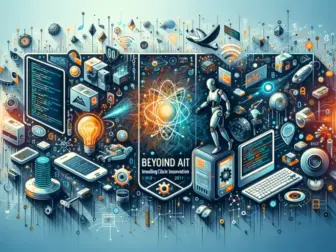Tag - Generative AI in IoT
Blog , March 24, 2024 , AIoT Applications, ChatGPT, Future of IoT, Generative AI, Generative AI in IoT, IoT Code Generation, IoT Innovation, Robotics Control, Social IoT Devices
Generative AI in IoT
Generative AI in IoT
Generative AI, combined with the Internet of Things (IoT), has the potential to revolutionize various industries by enabling machines to create unique and realistic content. This technology allows devices to generate new data, designs, and even human-like conversations, enhancing automation and intelligent decision-making processes.
Generative AI in IoT relies on deep learning models, such as generative adversarial networks (GANs) and variational autoencoders (VAEs), to generate content that resembles human creativity. By training these models on large datasets, machines can learn patterns and generate new content that is indistinguishable from human-generated content.
In the IoT context, generative AI has numerous applications that can enhance efficiency and productivity in various sectors. For instance, in manufacturing, generative AI can be used to create unique designs and prototypes for products, reducing the time and cost associated with traditional design processes. Machines equipped with generative AI can analyze consumer preferences, market trends, and product specifications to generate designs that are tailored to specific requirements.
Moreover, generative AI in IoT can improve the functionality of smart devices by generating realistic sensor data. For example, in the field of smart home automation, IoT devices can generate data that simulates the presence of occupants, creating a more realistic and secure environment. This technology can also be applied in healthcare, where IoT devices can generate synthetic patient data to aid in research and training medical professionals.
Another significant application of generative AI in IoT is natural language generation. Machines can be trained to generate human-like conversations, allowing for more natural and efficient interactions with virtual assistants and chatbots. This advancement can greatly enhance customer service and user experience in various industries, including e-commerce, telecommunications, and hospitality.
While generative AI in IoT offers numerous benefits, it also raises concerns regarding privacy and security. As machines generate and manipulate data, there is a risk of unauthorized access and misuse of sensitive information. Therefore, robust security measures and strict data privacy regulations are crucial to ensure the safe implementation of generative AI in IoT.
In conclusion, generative AI in IoT brings immense potential for innovation and advancement in various industries. By enabling machines to generate unique content, IoT devices can enhance efficiency, productivity, and user experience. However, it is essential to address the associated privacy and security concerns to fully harness the benefits of this technology.
